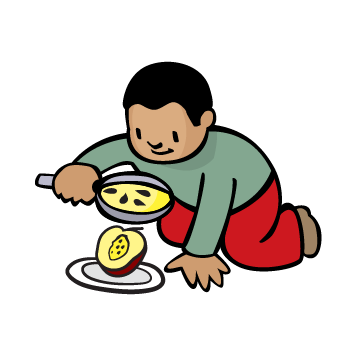Be a Detective When It Comes to Supermarket Shopping
TEXARKANA, Ark. –
There are some individuals who are able to provide for their families due to living off the land. They plant and grow their own fruits and vegetables, raise free-range chickens, and supply their cattle herd with all of the fresh green grass their tummies can handle. For many of us, that just doesn’t work so we have to rely on grocery stores and farmer’s markets for our foods to provide nourishment.
So, as we navigate the aisles at grocery stores, learn how to make wise decisions on the best, most nutritious foods we can feed ourselves and our families. It’s becoming more of a challenge, especially since so many things now come in a box, bag, bottle or carton. Become a detective and navigate the myriad of products by using information wisely. Chances are if it comes from the center of the store it likely will be packaged in a bag, box, carton, or bottle. Use these tips to navigate it wisely and make the best choices for your health.
Don’t be misled by health claims on the packaging. What makes it 100 percent whole grain, heart healthy, etc. Investigate the Nutrition Facts panel and ingredient list. If there are more than five ingredients in the food, determine whether you know what the ingredients are, whether you can see them in the food, and whether you can pronounce their names. If you can’t pronounce their name, it might be a reason to leave it on the shelf. Are the first ingredients high-quality ingredients, derived from whole grains, fruits, vegetables, nuts, or seeds? For example, the first ingredient in whole wheat bread should be whole wheat. Anything else and it might not be 100 percent whole wheat bread but brown because of flavoring or color that has been added.
Investigate the serving size. This will determine how much of each nutrient you’ll be getting in one serving. Remember, if you eat 2 or 3 servings of a food, you have to double or triple the amounts of fat, calories, etc.! A can of soup may have up to 4 servings per can, so investigate the serving size.
We all know that saturated fat is something we need to be limiting and watching in our diet. On the nutrition facts label, take a look at the saturated fat content. If there are more than 3 grams per serving, you probably should skip that food.
Put your detective skills to work when it comes to sugar. There are tons of forms of the sweet stuff: cane sugar, Florida crystals, honey, molasses, turbinado sugar, brown sugar, high fructose corn syrup, etc. These all act in the same way once they get into your system. Too much of any added sugars can cause weight gain and tax your pancreas by forcing it to secrete more insulin in order get the sugar into your cells. Remember, sugar has 15 calories in a teaspoon (4 grams). If a product contains 20 grams of sugar, it offers 5 teaspoons per serving! If you don’t think that is a lot, just measure out 5 teaspoons and see for yourself. Sometimes seeing is believing.
Scour the nutrition facts label to see how much fiber is in a single serving of food. If there are 3 grams of fiber in a single serving of a food, your detective skills are on target. If there are 5 grams or more in a serving, that food is considered an “excellent” source of fiber. If there are less than 3 grams of fiber per serving, you need to search more for a high fiber food. Fiber should come from plant foods. Think whole grains, beans, nuts, seeds, fruits, and vegetables.
Although we sometimes feel like we have to be a detective to find the healthiest foods for our families, if you will just do a little detective work reading food labels you will be able to spot the healthy foods.
For your free copy of the Dietary Guidelines for Americans, which offers tips for healthy eating, contact me at the University of Arkansas System Division of Agriculture in Miller County at 870-779-3609, e-mail Cdue@uada.edu or visit us in the Miller County Courthouse. You may also follow me on facebook at www.facebook.com/MillerCountyFCS, or visit our website at www.uaex.uada.edu/miller .
By Carla Due
County Extension Agent - FCS
The Cooperative Extension Service
U of A System Division of Agriculture
Media Contact: Carla Due
County Extension Agent - FCS
U of A Division of Agriculture
Cooperative Extension Service
400 Laurel Street, Suite 215 Texarkana AR 71854
(870) 779-3609
cdue@uada.edu
Related Links
The Arkansas Cooperative Extension Service is an equal opportunity institution. If
you require a reasonable accommodation to participate or need materials in another
format, please contact your County Extension office (or other appropriate office)
as soon as possible. Dial 711 for Arkansas Relay.
Pursuant to 7 CFR § 15.3, the University of Arkansas System Division of Agriculture
offers all its Extension and Research programs and services (including employment)
without regard to race, color, sex, national origin, religion, age, disability, marital
or veteran status, genetic information, sexual preference, pregnancy or any other
legally protected status, and is an equal opportunity institution.
